Every month at Past Offences we review the crime and mystery oeuvre of a particular year, and in December we were looking at 1960.
This month we have a theme tune, Man of Mystery, courtesy of the Shads, to listen to whilst you read.
 Brad led us off this month at ahsweetmystery with a review of Alfred Hitchcock’s Psycho, concluding:
Brad led us off this month at ahsweetmystery with a review of Alfred Hitchcock’s Psycho, concluding:
Do yourself a favor: ignore all the sequels and remakes and watch the original carefully. It’s such a rich film that it merits multiple viewings to see how complex and thoughtful this cheaply made little thriller actually is. It also carries something of a curse: it is said to have ruined Anthony Perkins’ career, it was the last chance the director gave Vera Miles to turn her into one of his great stars, and Janet Leigh insisted she could never take a shower again. On the plus side, it made Hitchcock even more of a household name, something very few directors up to that time had accomplished outside of the cinema cognoscenti. It is an honor well deserved.
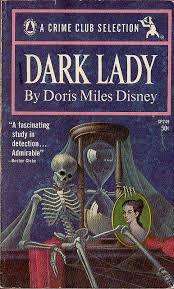 Bev began the books with Dark Lady by Doris Miles Disney, A Daughter-of-Time-esque story about an investigation into a historic murder, in which student Gib Fowler rents the cottage that once belonged to writer and murderer Deane Saxby…
Bev began the books with Dark Lady by Doris Miles Disney, A Daughter-of-Time-esque story about an investigation into a historic murder, in which student Gib Fowler rents the cottage that once belonged to writer and murderer Deane Saxby…
…begins reconstructing the events of 1884 through conversations with old timers, newspaper clippings, photographs, and scrapbooks. He examines the murder, the suicide of Deane’s brother, the inescapable influence of Leslie Saxby, and Deane’s literary stories about the mysterious “Dark Lady” to come up with a different solution to the old crime.
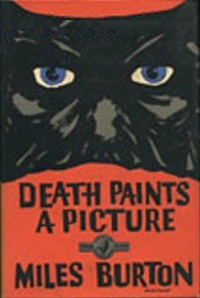 The Puzzle Doctor spent with the month with the final John Rhode novels, beginning with Death Paints a Picture (as by Miles Burton). The Doctor tells us later Rhodes are generally considered a bit crap, but:
The Puzzle Doctor spent with the month with the final John Rhode novels, beginning with Death Paints a Picture (as by Miles Burton). The Doctor tells us later Rhodes are generally considered a bit crap, but:
I was pleasantly surprised with this one […] The plot trundles along nicely though, and, as ever, the story is more about the investigation than presenting a fairly clued mystery, but there’s a nice reveal towards the end and there’s a clever simplicity in one of the murder methods. It makes a change from the other latter Rhode books that I’ve looked at that both hinged on a plot mechanic that was deeply irritating.
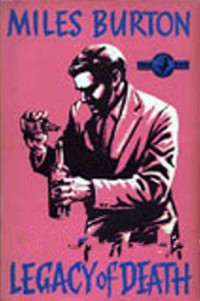 The Doctor then moved on to Legacy Of Death.
The Doctor then moved on to Legacy Of Death.
This one is pretty good too. It’s a classic-style mystery with plenty of suspects and a nicely complex scheme from the villain, which is something consistent with Rhode’s work, although the villain is on page for a decent portion of the book, which isn’t always the case. There’s a proper clue that means the reader can work out the villain and it’s a clever one, although there are flaws in the killer’s plan.
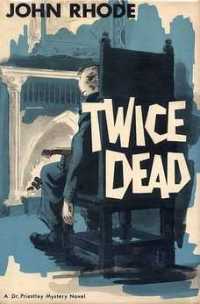 Any Rhode up, Jason Half read John Rhode’s Twice Dead, which…
Any Rhode up, Jason Half read John Rhode’s Twice Dead, which…
…benefits from a mischievous murder victim and a clever murder method, admirable in its simplicity. Still, the delivery of the story, from its practical, unremarkable prose to its deliberate pacing, leaves me a little restless for something more from a mystery, whether it’s Margery Allingham’s quirky penchant for description or Anthony Berkeley’s sharp thematic irony or Agatha Christie’s flair for misdirection.
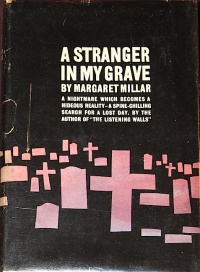 Bernadette at Reactions to Reading chose Margaret Millar’s A Stranger in my Grave, which has a great set-up…
Bernadette at Reactions to Reading chose Margaret Millar’s A Stranger in my Grave, which has a great set-up…
Daisy Harker, seemingly well-married and without much to fret about in life, has had a dream. In it she happens upon her own gravestone with a date of death some four years prior to the book’s present day. No one in Daisy’s life – not her mother, not her husband, not her husband’s best friend – thinks there is much to be made of the dream but Daisy becomes consumed by it.
In short I liked this book a lot. It’s not really very mysterious in the traditional sense but it is full of tension because we don’t know if Daisy will learn everything she needs to, nor how she and those around her will react if she does. It’s just as easy to imagine the poor woman being hauled off in a padded jacket as what actually happens.
At Classic Mysteries, Les gave us Leo Bruce’s Furious Old Women,
There are, in fact, a surprising number of nasty and furious – sometimes comically so – old women living in the village of Gladhurst, along with a variety of English village “types.” It is the death of Mrs. Bobbin’s older sister Millicent Griggs, that brings matters to a head. Her body is found in a new and open grave that had been dug for a Mr. Chilling, a shopkeeper in the village. She has, apparently, been hit on the head and the body appears to have been robbed of both money and jewelry. Mrs. Bobbin having little faith in the local police – a lack of faith which seems, over the course of the book, to be quite justifiable – she asks independent amateur sleuth Carolus Deene to lend a hand.
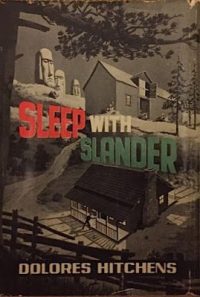 John at Pretty Sinister Books woke up ‘the best private eye novel written by a woman’, Dolores Hitchens’ Sleep with Slander:
John at Pretty Sinister Books woke up ‘the best private eye novel written by a woman’, Dolores Hitchens’ Sleep with Slander:
It certainly captures an authentic tone and feel reminiscent of a traditional hardboiled crime novel of the mid-1940s. It also has a uniquely feminine take on a missing persons case. Rather than a missing persons case that deals with two timing lovers or a con artist who has good reason to want to disappear Hitchens focusses on a missing child. As one might expect where the search for a missing child is the impetus for a crime plot the role of mothers, married or otherwise, plays a crucial part in the story.
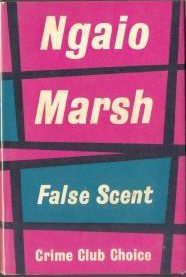 Lucy at The Art of Words sniffed out Ngaio Marsh’s False Scent, in which a fading actress is poisoned by her scent atomiser.
Lucy at The Art of Words sniffed out Ngaio Marsh’s False Scent, in which a fading actress is poisoned by her scent atomiser.
What makes it particularly 1960? Drawing-room comedy is going out, probably thanks to television. Mary’s clothes: for the party she wears pink, with flying panels of chiffon, and what sounds like a “corselette”. Anelida going to an evening party in a white hat. (The 60s didn’t really know what to do with hats. They were no longer obligatory for respectable women, as in the 50s and earlier, but milliners had to make a living and hats became a “feature”.) A gay character (Bertie) with a well-honed camp persona. (Homosexuality was still illegal, but the law was soon to change, and Kenneth Williams was a big star.)
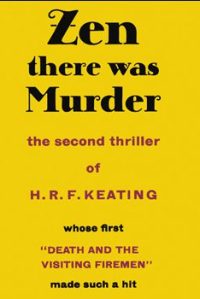 My offering was H. R. F. Keating’s Zen there was Murder, in which a country house finds itself the setting for an adult-education residential course on Zen Buddhism – and murder.
My offering was H. R. F. Keating’s Zen there was Murder, in which a country house finds itself the setting for an adult-education residential course on Zen Buddhism – and murder.
There’s something deliberately thin and surrealistic about this book – stock characters, a stock setting, the occasional hyper-vivid descriptive passage – which I think is supposed to say something about Zen philosophy and hint at something going on under the illusory surface (although I’m damned if I could work out what it was).
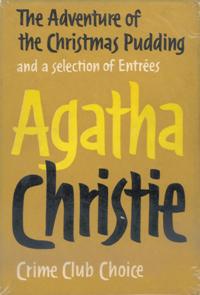 As my fellow Wulfrunian Noddy Holder still insists on saying, ‘Iiiiiit’s Chriiiistmasss’. So Kate at crossexaminingcrime got a little festive with Agatha Christie’s The Adventure of the Christmas Pudding.
As my fellow Wulfrunian Noddy Holder still insists on saying, ‘Iiiiiit’s Chriiiistmasss’. So Kate at crossexaminingcrime got a little festive with Agatha Christie’s The Adventure of the Christmas Pudding.
One thing which is definitely apparent in this story is nostalgia, which comes through in particular with how Christmas is celebrated. Many of the characters extol ‘a good old fashioned Christmas’ and worry that it is ‘dying out,’ with people choosing to spend it in hotels instead. A worry which I think hasn’t really been realised, as I can’t think of anyone I know who would choose a hotel over a normal family Christmas, though perhaps the types of entertainment have changed.
Moira at Clothes in Books also read The Adventure of the Christmas Pudding,
It isn’t Christie’s sharpest or most deadly book, but it IS very seasonal and enjoyable, and she says at the beginning that the title story is an exercise in nostalgia. Hercule Poirot goes for a traditional family country-house Christmas (having first, or course, checked that there is central heating – very sensible of him) and gets caught up in some crimes and some seasonal jollity. The most surprising and shocking thing in the story is not any of the nefarious goings-on, but – SPOILER – that Poirot gets kissed under the mistletoe, and enjoys it.
 Movie news from John at Noirish: He checked out (this is a chess joke) Schachnovelle, an adaptation of a Stefan Zweig story directed by Gerd Oswald. Visit the post to see the lovely images from the film and an explanation of the plot, which hinges on a confined man teaching himself chess, but sounds better when John explains.
Movie news from John at Noirish: He checked out (this is a chess joke) Schachnovelle, an adaptation of a Stefan Zweig story directed by Gerd Oswald. Visit the post to see the lovely images from the film and an explanation of the plot, which hinges on a confined man teaching himself chess, but sounds better when John explains.
It’s a fascinating and distinctly noirish psychological piece, and in most of the important respects it’s surprisingly faithful to the original […] a beautifully, even sumptuously produced piece. Bearing in mind how limited its settings are—the vast majority of the movie is confined to the Hotel Metropole, and the bulk of that to Room 532—it’s all the more remarkable that the cinematography can be so effective: poignant here, dramatic there, and just plain lovely throughout.
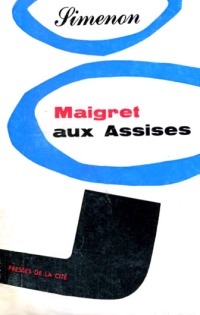 Jose Ignacio at A Crime is Afoot continued his Simenon-a-month regime with Maigret in Court, finds the Inspector on the verge of retirement, explaining to the Assizes why he believes a man is innocent on the basis of his character.
Jose Ignacio at A Crime is Afoot continued his Simenon-a-month regime with Maigret in Court, finds the Inspector on the verge of retirement, explaining to the Assizes why he believes a man is innocent on the basis of his character.
The strength of this book lies more on the psychological portrait of one of the main characters, rather than in the plot itself, as it’s usual the case on most, if not in all Maigret books. In fact, Gaston Meurant, a humble craftsman of frames for pictures, drags a meaningless life when his existence is affected by a criminal event and his innocence can only be proved by an evidence he doesn’t want to acknowledge. But finally he will have to face himself to facts he doesn’t want to admit, and his response won’t be in accordance with his past behaviour. The story, thanks to Simenon talent, is highly interesting and has a great sense of place. The reader will be able to travel around the streets of Paris in which the story unfolds and even be transported to those times.
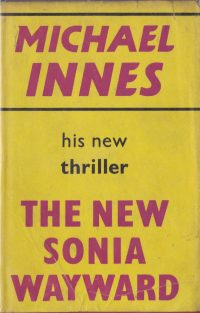 Jose Ignacio also enjoyed the wit of Michael Innes’ impersonation thriller The New Sonia Wayward:
Jose Ignacio also enjoyed the wit of Michael Innes’ impersonation thriller The New Sonia Wayward:
While sailing through the English Channel, Sonia Wayward suffers a heart attack and dies. Sonia Wayward, an acclaimed writer of romance fiction, was alone on board together with her husband, Colonel Ffolliot Petticate. Col. Petticate, used to the good life provided by the revenues of his wife’s books, is unable to come up with a better solution than throwing her corpse into the sea to conceal her death. He expects to make everyone believe that his wife went away to make a trip all around the world, trusting it won’t be difficult to finish the book she was currently writing. By impersonating her, he looks forward to keeping his income level.
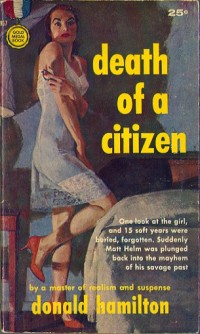 Tough guy Matt Helm made a first appearance in 1960, with Donald Hamilton’s Death Of A Citizen appearing on the Nick Carter & Carter Brown Blog:
Tough guy Matt Helm made a first appearance in 1960, with Donald Hamilton’s Death Of A Citizen appearing on the Nick Carter & Carter Brown Blog:
A citizen dies and a wartime special agent is reborn, as the girl with the code name of Tina walks into a cocktail party and 15 years of Matt Helm’s complacent post-war life slips away. Suddenly the old automatic reactions take over and Matt is thrust back to the time when he had been a lethal young animal trained to kill. And she had been his partner.
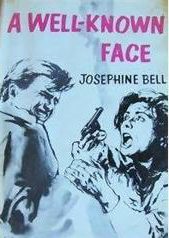
The Puzzle Doctor ended the month with Josephine Bell’s A Well-Known Face:
Jane Fuller is in love, although not with her husband. He was struck off the medical registry and left the country. No, despite being still married, she is having clandestine liaisons with an unknown gentleman in her house, who then leaves before the sun comes up. Which proves to be something of a problem on the day that she heads to see her lawyer to start divorce proceedings – because her lawyer has read the evening papers that state that a body was found in Jane’s house. You’ll never guess who the body belongs to…
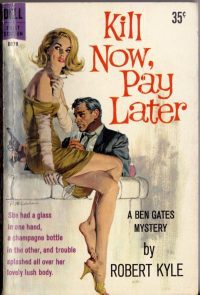 Kill Now, Pay Later by Robert Kyle is reviewed at at Bitter Tea and Mystery.
Kill Now, Pay Later by Robert Kyle is reviewed at at Bitter Tea and Mystery.
The storytelling is well done; I was entertained throughout. The plot is detailed and intricate, sometimes a bit hard to follow, but I just enjoyed the ride. The Ben Gates series is the type that features beautiful, well endowed women, either scantily dressed or in revealing clothes. I have no problem with that … I don’t find that the women are presented as silly or stupid. Most of them are just as amoral and conniving as the men in the story. In fact, many of the people that Gates investigates in this story are selfish and self-involved.
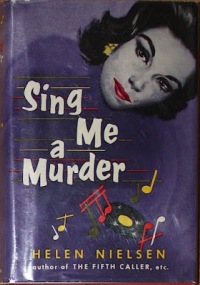 And John at Pretty Sinister Books rounded off the month with Helen Nielsen’s Sing Me a Murder,
And John at Pretty Sinister Books rounded off the month with Helen Nielsen’s Sing Me a Murder,
….a combination music and theater mystery. Nearly everyone in the case is involved in the entertainment industry in some way. There is an element of that heightened reality that pervades novels that take place in the artifice of the world of theater. Emotions are passionate, dialogue is rich with metaphoric expression, and behavior runs to the melodramatic.
Thanks and a very happy New Year to everyone who plays Crimes of the Century – I hope to see all of you again in 2017, which kicks off with 1959…




Thanks for another highly enjoyable roundup, Rich and all.
He checked out (this is a chess joke)
If you say so, mate!
LikeLiked by 1 person
A nice group of books. Thanks for pulling this all together. I must try that first Matt Helm book, Death of a Citizen.
LikeLike
This is the best post title I’ve seen for a while! 🙂
LikeLike
Thanks to Lucy for that one.
LikeLiked by 1 person